
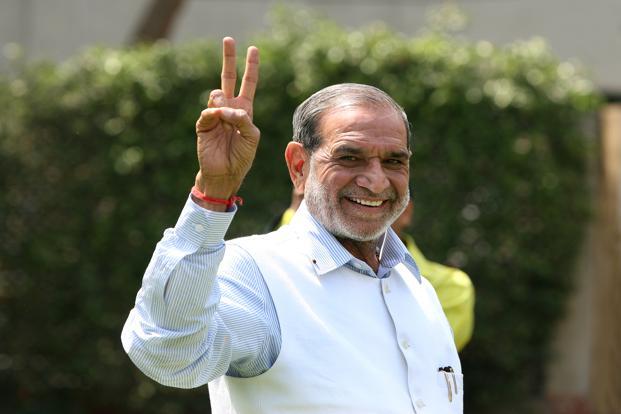
In a process that took three decades, Sajjan Kumar, a leader in India’s Congress Party, was recently acquitted for his well-documented involvement in the anti-Sikh pogroms during November 1984 in which thousands of Sikhs were murdered in three days in the country’s capital city. Five co-accused were convicted. (Source: Live Mint)
About two months ago, I observed the continuing engagement by representatives of the Indian government with the Sikh American community, which in that instance took the form of an exhibition on Sikh heritage in Atlanta, Georgia, sponsored by the Government of India. This exhibit has just recently been presented in Washington, D.C., as well, and it is consistent with increased engagement and activity related to the Sikh American community — be it directly, or through lobbying of US officials — by representatives of India. The increasing effort by Indian officials to promote the Sikh community in the United States is problematic, however, as it runs contrary to India’s track record with the Sikhs in its own borders over the past several decades.
Whether in the aftermath of a hate crime (such as in Oak Creek, Wisconsin, or recently in Fresno, California), or in what appears a deliberate attempt to brand the Sikh identity with Indian nationalism, representatives of the Indian government are insisting that they be the custodians of the Sikh community in the United States.
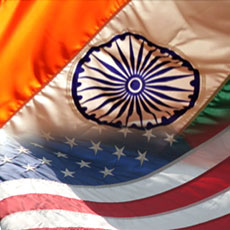 In 2006, Professors John Mearsheimer (University of Chicago) and Stephen Walt (Harvard) published a book titled The Israel Lobby and US Foreign Policy. In the book, Mearsheimer and Walt raise the following point – that since 1967, America’s relationship with Israel has been the centerpiece of its Middle East foreign policy.
In 2006, Professors John Mearsheimer (University of Chicago) and Stephen Walt (Harvard) published a book titled The Israel Lobby and US Foreign Policy. In the book, Mearsheimer and Walt raise the following point – that since 1967, America’s relationship with Israel has been the centerpiece of its Middle East foreign policy.
They then ask the question:
Why has the US been willing to set aside its own security and that of many of its allies in order to advance the interests of another state? One might assume that the bond between the two countries was based on shared strategic interests or compelling moral imperatives, but neither explanation can account for the remarkable level of material and diplomatic support that the US provides…. So if neither strategic nor moral arguments can account for America’s support for Israel, how are we to explain it?[link]
The answer:
The explanation is the unmatched power of the Israel Lobby. We use ‘the Lobby’ as shorthand for the loose coalition of individuals and organisations who actively work to steer US foreign policy in a pro-Israel direction. This is not meant to suggest that ‘the Lobby’ is a unified movement with a central leadership, or that individuals within it do not disagree on certain issues. Not all Jewish Americans are part of the Lobby, because Israel is not a salient issue for many of them. In a 2004 survey, for example, roughly 36 per cent of American Jews said they were either ‘not very’ or ‘not at all’ emotionally attached to Israel.[link]
While the Israeli Lobby remains one of the most powerful groups in Washington DC, there is a rising group in town – the India Lobby. Sometimes I am shocked by the naivety of Sikh-Americans that have NO understanding of the power of the Indian lobby. They are generally completely ignorant of the vast prestige and increasing power of this group. (Then of course, there is the other extreme that believe ‘agents’ lurk around every corner and never hesitate to call anyone that disagrees with them, a ‘sarkari agent.’)
Guest blogged by Naujawani Sardar
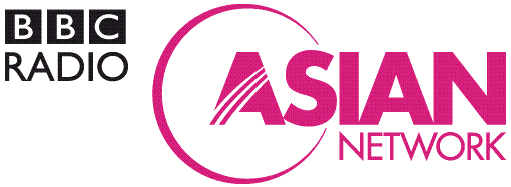 Sikhs in the UK celebrated a victory of sorts today with the news that the national broadcaster, the BBC, ‘regretted’ comments made by a presenter on their digital radio station, the BBC Asian Network. On 13 March, DJ Nihal Arthanayake had suggested on his daily call-in show that Sikhi was “made up from other religions i.e. Islam and Hinduism” [see related article]. When corrected by a listener who texted in to challenge the presenter’s comments, Nihal showed shocking arrogance in asserting that he himself was correct and replied that he knew “more about your religion than you do”. But today’s news is only a victory of sorts with Lord Inderjit Singh of the Network of Sikh Organisations describing it as “not a very good sorry” and in this writer’s humble opinion, a mere bone to keep us from tackling the real problem.
Sikhs in the UK celebrated a victory of sorts today with the news that the national broadcaster, the BBC, ‘regretted’ comments made by a presenter on their digital radio station, the BBC Asian Network. On 13 March, DJ Nihal Arthanayake had suggested on his daily call-in show that Sikhi was “made up from other religions i.e. Islam and Hinduism” [see related article]. When corrected by a listener who texted in to challenge the presenter’s comments, Nihal showed shocking arrogance in asserting that he himself was correct and replied that he knew “more about your religion than you do”. But today’s news is only a victory of sorts with Lord Inderjit Singh of the Network of Sikh Organisations describing it as “not a very good sorry” and in this writer’s humble opinion, a mere bone to keep us from tackling the real problem.
The daily call-in show on the BBC Asian Network has been steadily gaining in notoriety over the last 18 months fuelled largely by an increasing move towards discussions that court controversy. From 1pm-3pm, Monday to Friday, listeners tune in to hear the presenter, callers and occasionally guests debate a topical issue that is usually relating to a section of the South Asian community, followed by a sparse selection of music and further, more light-hearted discussion. Sometimes the initial debates have been incredibly engaging and informative, on other occasions they are needlessly provocative and disparaging.
In recent months, I have been called upon as a contributor to the show a handful of times, speaking live on air as a Sikh voice and I have publicly commended the production team of the show on two separate occasions for talking about challenging issues that are otherwise ignored by mainstream media. Following a discussion show about the recent Immortal Productions release ‘Jaago’ , a show to which I contributed by a pre-arranged telephone call, I took to Twitter to voice how fair I thought the production team had been in allowing Sikhs such as myself to make our voices heard about the rife corruption, inequality and poverty prevalent in the Indian State of Punjab over the last sixty years. Having been in Sikh political circles for over two decades now, I was unsurprised by the immediate level of hate I received from fellow Sikhs for being seen to ‘support’ Nihal and the BBC Asian Network on that occasion, but it did make me realise that Nihal in particular seemed to be drawing much of the ire. Whilst this is to some extent deserved, it would be foolish to reason that replacing the presenter might provide scope to change direction. But this is a difficult reality to impart upon a very unforgiving Sikh diaspora. I made the mistake of trying to explain to a young Sikh female on Facebook that a presenter of a call-in show usually acts in accordance with the briefing given to them by the production team, who in-turn are loosely guided by the direction given to them from the station controller or management, and that if she did have any complaints here they ought best be directed towards the BBC as well as the individual. She proceeded to reply that I must be a blind fan of Nihal’s and was planning on giving him a siropa. Oh the joys of ‘debating’ on social media(!)
 This season, Americans are spending $465 billion, according to the National Retail Federation and a substantial portion of that is on gifts. Luckily, the final days of the year are a chance to give in a different kind of way and by doing so, gain a benefit – namely, contributions made to a charitable organization by December 31st count as a deduction on your 2011 tax return.
This season, Americans are spending $465 billion, according to the National Retail Federation and a substantial portion of that is on gifts. Luckily, the final days of the year are a chance to give in a different kind of way and by doing so, gain a benefit – namely, contributions made to a charitable organization by December 31st count as a deduction on your 2011 tax return.
In Sikhi, there is the tradition of dasvandh – or giving a tenth of your seva, time or profits. The concept of dasvandh was implicit in Guru Nanak’s own Gurbani in the line: One who works for what he eats, and gives some of what he has – O Nanak, he knows the Path (SGGS p 1245).
While it’s not clear how much the Sikh community actually participates in this tradition (perhaps we just don’t discuss it publicly), it’s nevertheless clear that giving is an integral element of our faith. According to the Stanford Center on Philanthropy and Civil Society, the fact that 35 percent of all American giving went to religious organizations in 2010 reflects how closely bound many of us are with our place of worship. In 2011, the United States now ranks the highest in terms of charity in a massive global survey that put the nation in fifth place just last year. According to those surveyed, two out of three Americans said they donated money to charity (65 percent), more than two out of five volunteered their time (43 percent) and roughly three out of four helped a stranger (73 percent). Finally, according to a new study by the Center on Philanthropy at Indiana University in nearly 90 percent of certain households, women are either the sole decision maker or an equal partner in decisions about charitable giving.
 Earlier this month, worldwide Human Rights organization Amnesty International released a news article on the plight of Sikh Massacre victims of 1984, still awaiting justice after 25 years. This came shortly after the Delhi Court delayed ruling on Jagdish Tytler, due to the CBI’s inability to produce enough evidence against him. Ramesh Gopalakrishnan, Amnesty International’s South Asia Researcher stated:
Earlier this month, worldwide Human Rights organization Amnesty International released a news article on the plight of Sikh Massacre victims of 1984, still awaiting justice after 25 years. This came shortly after the Delhi Court delayed ruling on Jagdish Tytler, due to the CBI’s inability to produce enough evidence against him. Ramesh Gopalakrishnan, Amnesty International’s South Asia Researcher stated:
“The fact that almost 3,000 people can be murdered without anyone being brought to justice is offensive to any notion of justice and should be an embarrassment to the Indian government.”
“For the Indian government to dismiss these cases due to lack of evidence is farcical. The various agencies responsible for carrying out the investigations failed to carry out the most cursory of tasks – including recording eyewitness and survivor statements.”
As troubling as it is to read this, I was pleased to find that Amnesty International had covered it at all. As many of know, AI, as well as other independent human rights groups and initiatives were either banned or prevented from conducting research in India in the late 1980’s and early 1990’s. It seems as though there is hope for an independent investigation on the 1984 anti-Sikh pogroms and perhaps the subsequent disappearances during the counter-insurgency.
Not so fast…in an un-related story, the Tribune reported that Amnesty International has decided to shut down its India operations. The decision is said to have been triggered by continued denial to the Amnesty International Foundation of the FCRA (Foreign Contribution Regulation Act) registration by the Government of India.
Continue Reading »
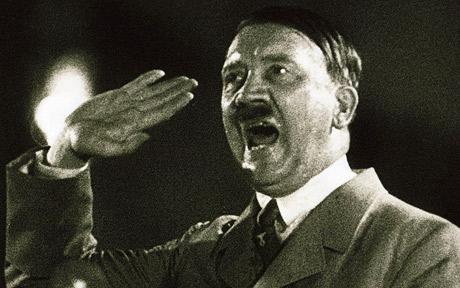 Sometimes some articles are too disturbing to not make a comment.
Sometimes some articles are too disturbing to not make a comment.
The word Mein Kampf immediately brings to mind Adolf Hitler’s deluded dream and genocidal paranoia of the “Jewish peril”. Long the Bible of idiotic Aryan supremacist groups, the book seems to have found a rather new (or maybe) old niche market in India.
Sales of Mein Kampf, Adolf Hitler’s autobiography and apologia for his anti-semitism, are soaring in India where business students regard the dictator as a management guru.
Booksellers told The Daily Telegraph that while it is regarded in most countries as a ‘Nazi Bible’, in India it is considered a management guide in the mould of Spencer Johnson’s “Who Moved My Cheese”.
Sales of the book over the last six months topped 10,000 in New Delhi alone, according to leading stores, who said it appeared to be becoming more popular with every year.
 With Obama’s move for a new strategy, recently, we have seen an avalanche of different articles from Af-Pak, the newly vogue name for the region. I will begin with some more macro-debates, before turning to the Sikh-specific.
With Obama’s move for a new strategy, recently, we have seen an avalanche of different articles from Af-Pak, the newly vogue name for the region. I will begin with some more macro-debates, before turning to the Sikh-specific.
An interesting analysis was recently featured in the London Review of Books, in an article titled ‘Taliban versus Taliban.’ In the article, the Economist correspondent, Graham Usher, notes that Americans have a problem in understanding the complexities of the “Taliban” phenomenon because it means different things to different people at different times.
All politics is local and that is how the Taliban should be treated as well. Made up of diverse factions and groups with widely separate ideologies, we “lump” them under a specific tag – “Taliban.” While for the US, anyone that attacks them in Afghanistan is Taliban, for the Pakistani Army, their perspective is a bit different. The only issue that really matters is if the group works in India’s strategic interest. Thus there are ‘good’ elements and ‘bad’ elements:
The short answer is pro-India, in practice if not intent. Insurgents in the tribal areas are deemed anti-Pakistani if their actions advance the perceived goals of India in Afghanistan. They are pro-Pakistani as long as they don’t attack the Pakistani state or army, even if they launch attacks against Nato forces in Afghanistan, Islamabad’s supposed allies in the ‘war on terror’. Indeed, the Afghan Taliban is considered an ‘asset’, a hedge against the day when the US and Nato leave, but also a counter to India’s expanding influence in Afghanistan.
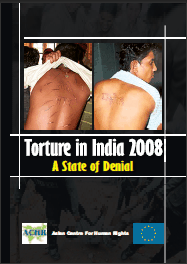 I recently stumbled on a report from the Asian Centre for Human Rights (ACHC), titled Torture in India 2008: A State of Denial. This document claims to be “the first nationwide assessment of the use of torture in India.”
I recently stumbled on a report from the Asian Centre for Human Rights (ACHC), titled Torture in India 2008: A State of Denial. This document claims to be “the first nationwide assessment of the use of torture in India.”
ACHC is a Delhi-based organization focused on protecting human rights throughout Asia, with what appears to be a specific focus on South Asia. I’m not familiar with this organization, so I’d be curious to hear if others can support or disprove their work.
The report focuses on the use of torture by police and security forces from routine arrests to counter-insurgency operations. Although it is clearly a preliminary analysis, it’s findings are quite alarming. The report notes:
The statistics of NHRC imply that in the last five years 7,468 persons at an average of 1,494 persons per year or four persons in a day died in police and prison custody in India. However, these figures represent only a fraction of the actual cases of torture. Cases of torture not resulting in death are not recorded.
Particularly troublesome was the section on custodial torture of women and children.
Coblogged by: Jodha and Mewa Singh
Well it doesn’t seem by the number of comments (0) that this first attempt at a book club garnered much interest, although by the number of hits, it has been extremely popular. Regardless, for us it has been a 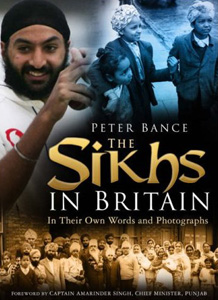 great excuse to read a great book….So we’ll continue. PS: the side picture is related to a soon-to-be-available coffee table photography book.
great excuse to read a great book….So we’ll continue. PS: the side picture is related to a soon-to-be-available coffee table photography book.
———————————————–
The two chapters read this week probably deserve separate blog posts, but still in the interest of time and space, we are going to keep them together.
Chapter 5 deals with “Homeland Politics: Class, Identity, and Party” and Chapter 6 is about “British Multiculturalism and Sikhs.”
The authors begin chapter 5 by noting that:
Associations of immigrants in Britain have generally served two functions: to facilitate the integration of the new arrivals and as conduits of homeland politics, and these functions have further strengthened with the onset of globalization, which has underpinned the rise of nationalism and diaspora movements. (94)
1984 is seen as the ‘critical’ event that intensified Sikh religio-ethnic self-identification with large numbers of Sikhs. The mammoth protest at Hyde Park on June 10, 1984 may still be vividly inscripted upon the memories of many Sikh-Britishers.
Still the associations and groups that were created to manifest this new religio-ethnic self-identification and homeland politics were along the lines of traditional associations. While there was something new in what came out of the community after 1984, there are continuities as well.
Tracing the evolution of various causes within the Sikh community, the authors note moves from the politics of class (IWAs [Indian Workers Association] up to the early 1980s), to the politics of identity (Khalistan 1984-1997), to emphasis on political organization (Sikh Political Party, UK) (94).
As readers may have seen, we’ve been swept up with the elections here at TLH, and many of us are out volunteering and (wo)manning the polls today. As a Sikh-American woman and the daughter of Punjabi immigrants, this day is especially important to me — my right to vote is the product of over 100 years of activism to extend the rights of citizenship to all.
For those who are eligible and registered to vote in the U.S., I hope you’ll take today to cast your ballot. Whether you are voting for President, or for local initiative measures, or for state/local offices, you hav an exceptional opportunity to make your voice heard.
Below is some historical background on the extension of citizenship rights; hopefully it will get you pumped to participate:
- 1868: The Reconstruction Amendments eliminate non-criminal slavery (Amendment 13) and create a Constitutional right — in theory — for former-slaves and their descendants to fully participate in the post-Civil War U.S. (Amendment 15).
- 1913: The 17th Amendment allows for direct election of Senators.
- 1920: After nearly 70 years of lobbying, women win the right to vote.
- 1923: The U.S. Supreme Court revokes the citizenship rights of desi immigrants.
- 1940-47: Congress recognizes Native Americans as citizens, and over the next 7 years states incorporate them into their voting apparatus.
- 1946: Harry Truman gives back the right to naturalize, allowing desis and Filipinos to become citizens, once again.
- 1964: The 24th Amendment eliminates the poll tax (for federal elections).
- 1965: 100 years after Reconstruction, the Congress upholds everyone’s right to vote (including people of color and the poor) and criminalizes voting discrimination/disenfranchisement. It eliminates poll taxes (for state elections), literacy tests, and English-only language requirements.
- 1971: The voting age is lowered to 18.
- 2005: Indiana limits the right to vote to individuals with state/federal ID, only. The Supreme Court affirms their law.
For more information, here’s an annotated timeline of the development of voting and its slow inclusion of non-propertied and non-white individuals, and later women and immigrants.
